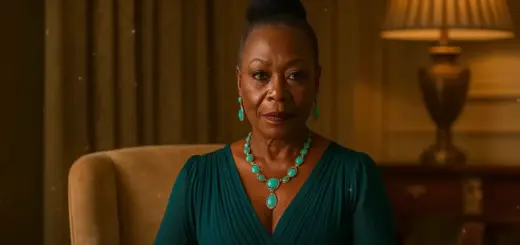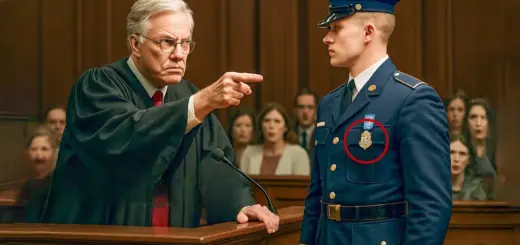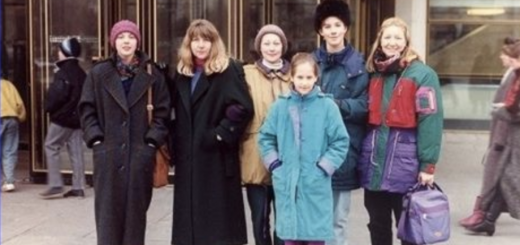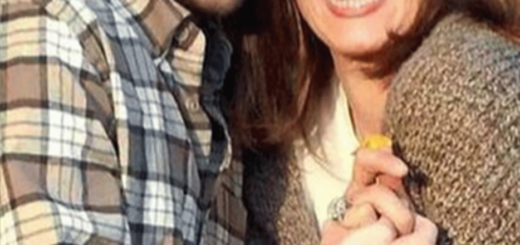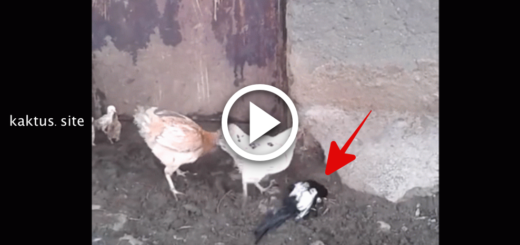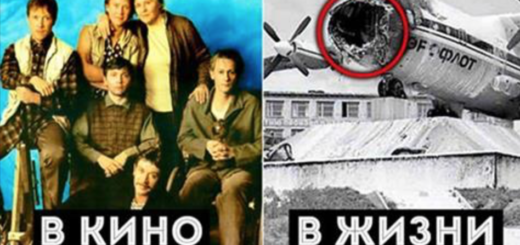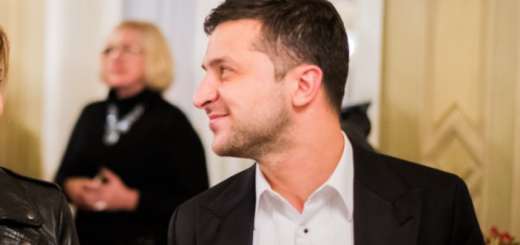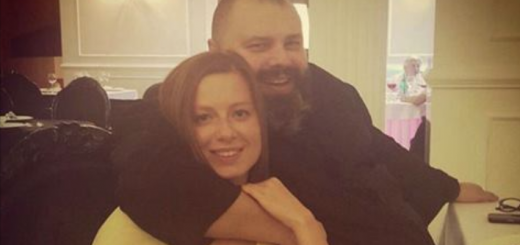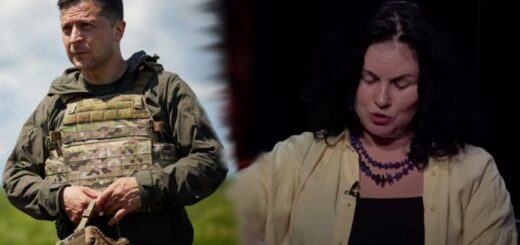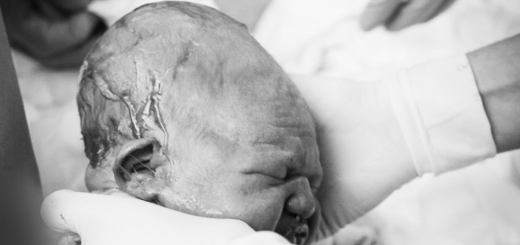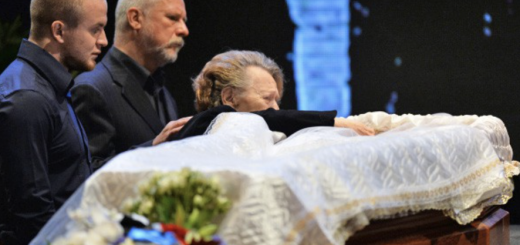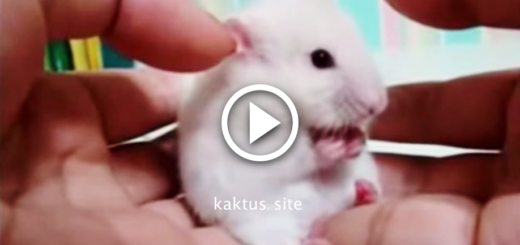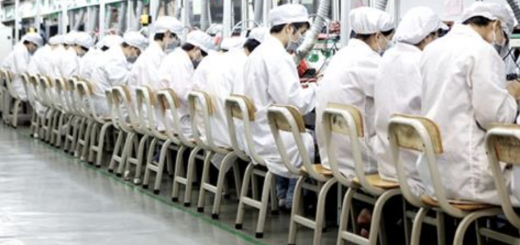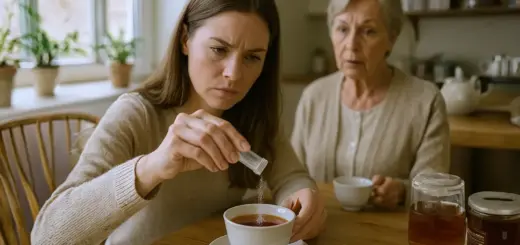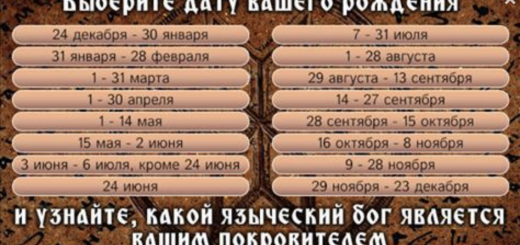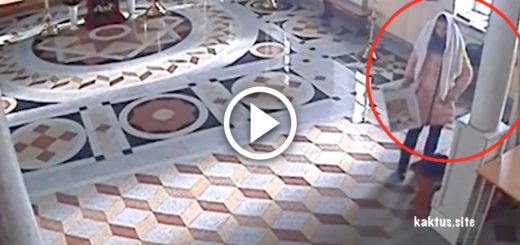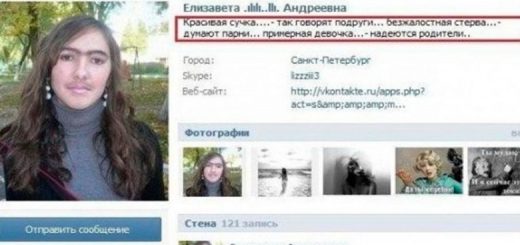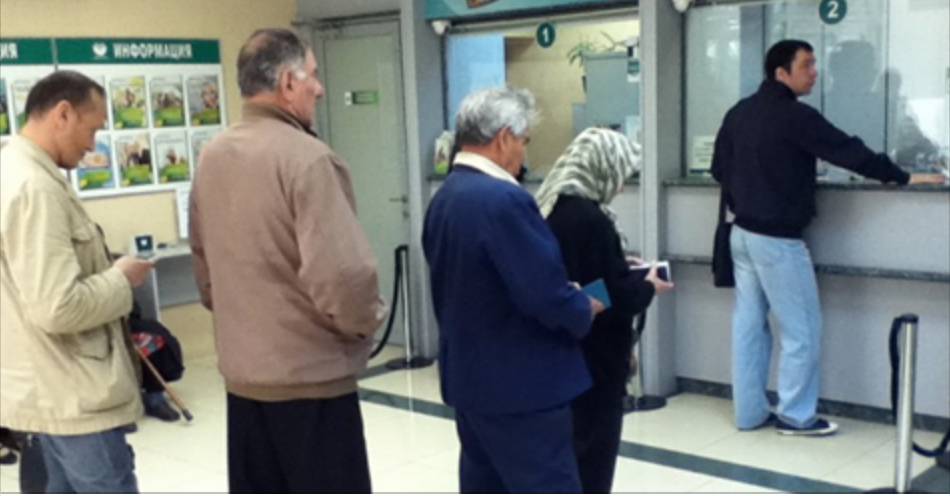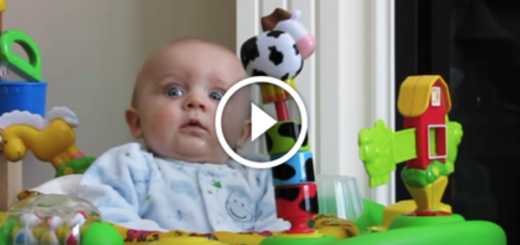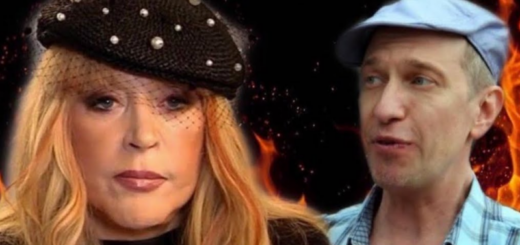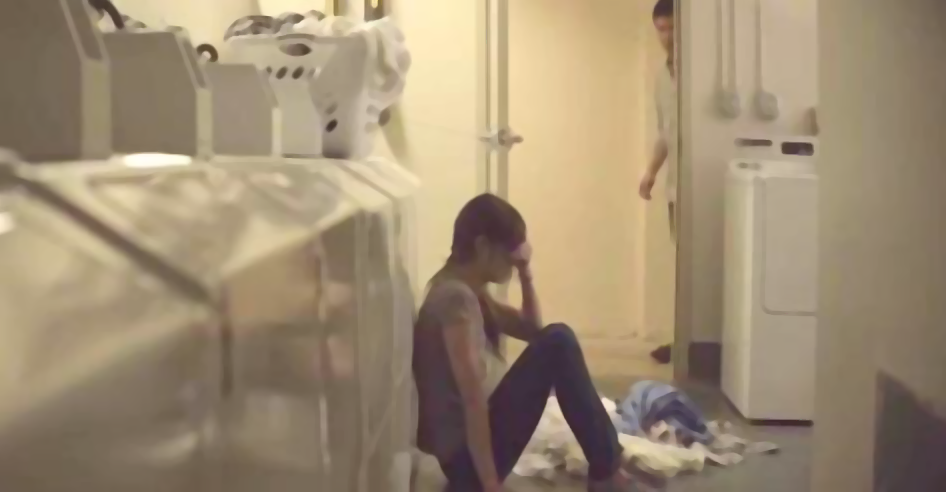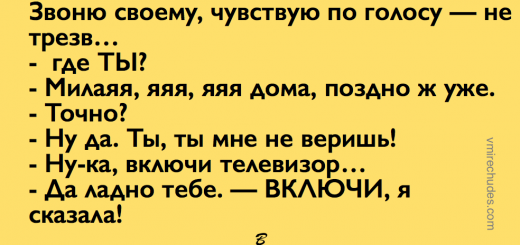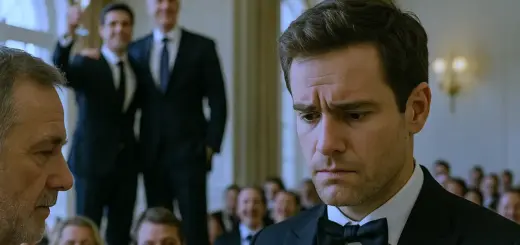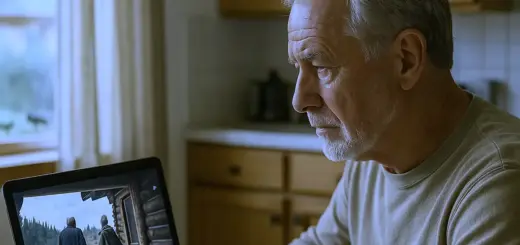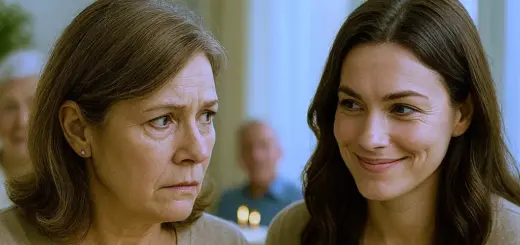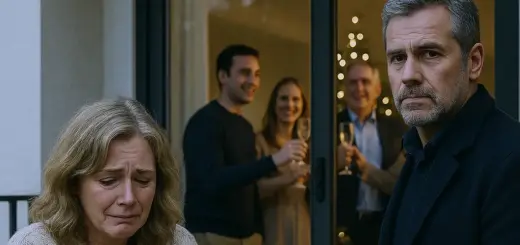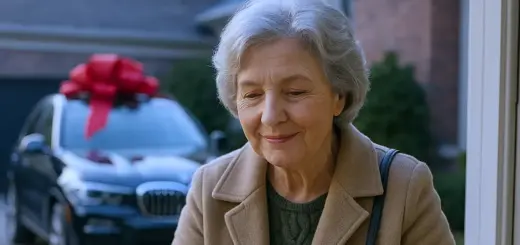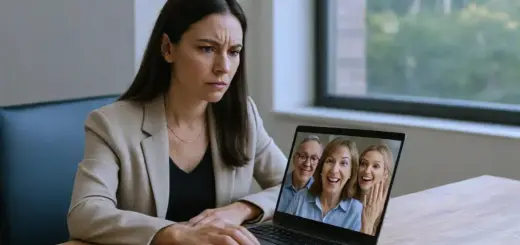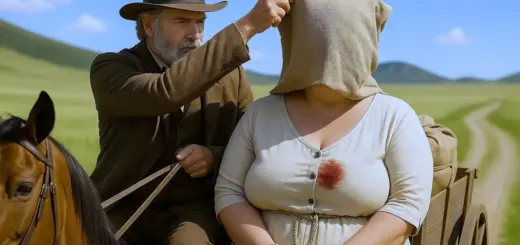He said his voice carrying clearly through the reception hall with a warmth that contrasted sharply with the coldness of the preceding revelations. I love your strength, Sarah, and together we’re going to build a real family one based on honesty, respect, and the kind of unconditional love that protects rather than destroys. His words were simple and direct, but they carried the weight of a promise that extended far beyond typical wedding vows.
This wasn’t just a romantic declaration, it was a commitment to breaking the generational patterns that had poisoned my family relationships and creating something healthier for whatever children we might have in the future. The emphasis on building rather than inheriting felt particularly powerful given what we had just exposed about the toxic legacy that stretched back through multiple generations of Montgomery women. The response from the remaining guests was immediate and deeply moving.
The applause that filled the reception hall carried a different quality than the shocked reactions that had characterized earlier portions of the evening. This was the sound of genuine celebration and emotional support from a community that had witnessed something truly redemptive amid the wreckage of family dysfunction. Eleanor Patterson, still dabbing at her eyes with a handkerchief, called out from her table near the front of the room, that’s what real marriage looks like.
Her voice cracked with emotion as she spoke, and I could see other older women throughout the reception hall nodding in agreement, their faces reflecting the kind of recognition that comes from decades of observing relationships and understanding the difference between authentic partnership and social performance. Dr. Harrison’s wife, Patricia, added her own validation, you two have shown more genuine love and commitment in the past hour than many couples demonstrate in years of marriage. This is what it means to stand by someone when they need you most.
Her words seemed to speak for many of the guests who had watched David’s unwavering support throughout the evening’s revelations, with obvious admiration and respect. The emotional support from the community felt like a warm embrace after years of feeling isolated within my own family, and I realized that while I had lost the people who should have loved me unconditionally, I had gained something potentially more valuable, a chosen family of friends and community members who had seen me at my most vulnerable and chosen to stand with me, rather than judge me. When I turned to embrace David feeling the solid warmth of his presence and the steady rhythm of his heartbeat against my cheek, I was overwhelmed by a sense of hope that I hadn’t experienced in years.
This hug felt different from any romantic gesture we had shared during our courtship. It was the embrace of true partners who had been tested by crisis and emerged stronger rather than broken. The symbolism wasn’t lost on the assembled guests, many of whom had spent the evening watching a family disintegrate under the weight of its toxicity.
Seeing David and me find strength and unity in the midst of that destruction seemed to provide a kind of emotional catharsis for people who might have been questioning whether authentic love and healthy relationships were even possible in a world that often seemed dominated by manipulation and self-interest. Ruth appeared at our table, her face glowing with the kind of satisfaction that comes from seeing justice served and truth validated. She squeezed my free hand and whispered, This is how cycles break, not through revenge, but through choosing to build something better.
Her words carried the weight of her decades as an educator and her understanding of how generational patterns could be interrupted through conscious choice and moral courage. The reception hall had transformed from a venue for social drama into something that felt more like a celebration of resilience and authentic connection. Guests were no longer focused on the scandal of what had been revealed but on the hope represented by David’s commitment and the community support that had emerged from witnessing our crisis together.
But even as I savored this moment of warmth and validation, my peripheral vision caught movement that reminded me the evening wasn’t over yet. Through the glass doors that led to the country club’s outdoor terrace, I could see my mother pacing frantically while talking on her phone, her animated gestures suggesting she was engaged in an urgent and potentially desperate conversation with someone who wasn’t present at the reception. The sight of her making what appeared to be a clandestine phone call sent a chill through me because I knew Margaret Montgomery well enough to understand that she wouldn’t accept defeat without attempting one final manipulation or damage control strategy.
Her body language suggested she was calling in favors making threats, or perhaps arranging some kind of counterattack that could still turn the evening’s triumph into yet another betrayal. David noticed the direction of my gaze and followed it to where my mother was gesticulating wildly while speaking into her phone. His expression darkened as he realized that our moment of peace and hope might be temporary and that the woman who had orchestrated my humiliation might have one more card to play in her desperate attempt to salvage her reputation and maintain control over the narrative.
Outside the glass door, mother pulled out her phone to call someone, and that call might be the final poison. My mother’s frantic phone conversation through the glass doors proved to be just the opening salvo in what would become a desperate digital warfare campaign orchestrated by Melissa from the parking lot of Magnolia Hills Country Club. Within minutes of being escorted from the reception, my sister had apparently decided that her only hope of salvaging the situation was to take her case directly to social media bypassing the community leaders who had witnessed her breakdown firsthand.
Tommy Chen’s monitoring equipment picked up the livestream notification almost immediately, and he quickly patched the feed through to our main screen so the remaining guests could witness Melissa’s final desperate gambit in real time. She was sitting in her car, her makeup streaked with tears, and her hair disheveled from her earlier outburst, but her voice carried the same manipulative confidence that had characterized her ultimatum the night before. I need everyone to understand what really happened tonight.
She began staring directly into her phone’s camera with the kind of intense focus that suggested she believed this performance would somehow reverse the evening’s disasters. My sister Sarah has been planning this whole drama for months. She cut her own hair made up these stories about our family and staged this entire wedding reception scandal because she’s always been jealous of the attention I get from our parents and our community.
The lies were so transparently desperate that several guests in the reception hall actually laughed out loud, but Melissa pressed on with her narrative, apparently convinced that her events would somehow prove more compelling than the documented evidence that had already been presented. She claimed that the audio recordings were fabricated that the text messages had been doctored and that even her own public breakdown had been part of an elaborate scheme to frame her for crimes she hadn’t committed. But the internet’s response was swift and merciless.
Within minutes of her livestream going live, viewers had begun flooding the comments with evidence that contradicted every element of her story. Someone had located and shared old social media posts where Melissa had bragged about her special relationship with David, including photos from family gatherings, where she had deliberately positioned herself next to him, and captions that suggested romantic rather than familial affection. The hashtag, hashtag GoldenChildExposed, began trending almost immediately with users sharing their own stories of sibling favoritism and family dysfunction while expressing support for my courage in speaking truth to power.
The comments section became a real-time fact-checking operation as viewers dissected Melissa’s claims and provided counter-evidence that demolished her credibility with surgical precision. One particularly damaging discovery came when users found a video from Melissa’s own social media account posted just two weeks earlier, where she had explicitly stated her belief that David was too good for Sarah, and that she could make him happier if he would just give her a chance. The video had apparently been posted during one of her late-night social media binges, and she had forgotten to delete it before launching her current damage control campaign.
But Melissa’s most catastrophic mistake came when she attempted to play what she clearly believed would be her trump card, a deepfake audio recording that supposedly featured me confessing to staging the entire evening’s revelations. The technology she had used was apparently the same amateur voice synthesis software that had failed so spectacularly during the reception, and the result was even more obviously artificial when played through her phone’s inferior speakers. Tommy Chen’s expertise proved invaluable once again, as he was able to provide real-time technical analysis that demolished any possibility that viewers might be fooled by Melissa’s fabricated evidence.
He announced through our sound system while simultaneously typing comments into the livestream chat. The audio file she’s playing shows clear digital artifacts consistent with low-quality voice synthesis software. Additionally, I can identify a watermark embedded in the file that traces back to scanning software used for digitizing grandmother’s diary suggesting this was created using source material from family documents rather than original recordings.
His technical analysis was devastating in its precision, and the livestream comments exploded with accusations of fraud and demands that Melissa stop insulting their intelligence with such obviously fabricated evidence. The attempted counterattack had backfired so completely that it actually strengthened the case against her, while providing additional evidence of her willingness to lie and manipulate in pursuit of her goals. The final blow came when someone in the livestream chat identified themselves as a neighbor who had witnessed the previous night’s events through their window corroborating Dorothy Henshaw’s earlier testimony, and providing additional details about the timeline that made Melissa’s alternative narrative completely impossible to maintain.
The social media reckoning was both swift and comprehensive with comments poured in from users around the country who recognized similar patterns of abuse and manipulation in their own families, turning my personal story into a broader conversation about generational trauma and the courage required to break toxic cycles. Realizing that her digital counterattack was failing as spectacularly as her earlier attempts at manipulation, Melissa made one final desperate move. She turned her phone’s camera toward the reception hall’s windows, trying to film the ongoing celebration as evidence that I was somehow celebrating her destruction, rather than simply trying to salvage my wedding day.
But this gave me the opportunity I needed to deliver a final, definitive statement that would end her ability to manipulate this narrative or intrude on my life going forward. I walked to the window where she could see me, clearly looked directly into her phone’s camera, and spoke with the kind of calm authority that comes from finally understanding your own power. Melissa I said my voice carrying clearly through the glass, and undoubtedly being transmitted to hundreds of viewers through her livestream.
This is the last time you will ever have any impact on my life. You’ve shown everyone exactly who you are, and I’m done protecting you from the consequences of your choices. The livestream chat erupted with supportive comments and applause emojis as viewers witnessed what they correctly interpreted as the final victory of truth over manipulation.
I looked straight into livestream camera, this is the last time you touch my life. And the screen went dark, leaving hashtag, chat, break the cycle trending. The abrupt end of Melissa’s livestream created a moment of profound silence in the reception hall, as if the entire room needed time to process the complete dismantling of my family’s carefully constructed facade.
But instead of dwelling on the destruction, I realized this was the perfect moment to establish the boundaries that would define my future relationships, and protect the life David and I were building together. I walked back to the microphone one final time, but instead of revealing more evidence or delivering additional accusations I chose to focus on the most important element of healing, creating clear, non-negotiable boundaries that would prevent my family from continuing to inflict damage on my emotional well-being. I want to make something very clear to everyone here tonight.
I said my voice carrying the calm authority of someone who had finally found her power after years of being manipulated and controlled. Effective immediately, I am establishing a six-month period of no contact with my parents and sister. All communication will go through lawyers, all future interactions will be documented, and these boundaries are not negotiable.
These are the terms that will allow me to begin healing from what has been done to me. The public declaration felt both terrifying and liberating because it represented the first time in my life that I had prioritized my own emotional safety over my family’s comfort and convenience. The guests seemed to understand the significance of what they were witnessing, not just the end of a dramatic evening, but the beginning of a new chapter, where I would no longer accept abuse disguised as family loyalty.
Several community members nodded approvingly at my boundary setting, and I could see respect in their faces as they recognized the courage it takes to cut ties with toxic family members, even temporarily. Eleanor Patterson called out softly, That’s exactly what you need to do, honey. Protect yourself first, and let them figure out how to earn back the privilege of being in your life.
As the reception began winding down and guests started saying their goodbyes, Ruth approached me with the kind of grave expression that suggested she had been waiting for the right moment to share something important. She guided me to a quiet corner where we could speak privately away from the remaining conversations and cleanup activities. Sarah.
She said her voice heavy with the weight of family history. I need you to understand something about the pattern you’ve broken tonight. Your grandmother favored your mother exactly the same way your mother favored Melissa.
I watched it happen when your mother was young, the same manipulation, the same emotional blackmail, the same willingness to sacrifice one child for another’s benefit. This cycle of twisted love and competition has been poisoning our family for at least three generations. Her revelation provided crucial context for everything I had experienced helping me understand that my abuse wasn’t personal, but rather the continuation of a generational pattern that had been passed down like a toxic inheritance.
The knowledge was both painful and liberating because it meant the cruelty I had endured wasn’t about my inadequacy, but about a family system that had been broken for decades. But tonight? Ruth continued her eyes bright with tears of pride. You’ve done what your mother never had the courage to do.
You’ve said no to the pattern, refused to pass it on, and chosen to build something healthier. This cycle stops here with you, and that’s going to change everything for any children you might have in the future. David appeared at my side as Ruth finished speaking, and together we made the decision that would define the rest of our wedding night.
Instead of staying at the country club for the traditional final dances and formal send-off, we chose to leave quietly and celebrate our marriage in a way that felt authentic to who we were rather than who my family had expected us to be. We drove to Murphy’s Roadhouse, a small bar on the outskirts of town that featured live music and a tiny dance floor where locals gathered for genuine fun rather than social performance. The contrast with the elegant country club reception couldn’t have been more stark rough wooden floors, neon beer signs, and a crowd of people who had probably never heard of the Montgomery family drama but welcomed us warmly when they learned we were newlyweds.
David and I danced our first dance as husband and wife to a country song played by a three-piece band that probably cost less than the flower arrangements at our reception. But it was perfect in a way that our formal celebration never could have been, because it represented our choice to prioritize authenticity over appearance, connection over performance, and joy over obligation. The laughter that filled that small roadhouse felt healing in a way I hadn’t experienced in years.
Strangers bought us drinks and shared stories about their own weddings, and for the first time all day, I felt like I could simply be happy without worrying about family drama or social consequences. This was what marriage was supposed to feel like partnership celebration and hope for the future. As we prepared to leave Murphy’s and head to our new home, David’s phone buzzed with a notification that made both of us pause.
It was an email from Hartwell Family Pharmacy sent to the emergency contact address that had been updated when Ruth gained access to the family medical accounts during my grandmother’s final illness. The time stamp showed the message had been sent automatically as part of the pharmacy’s routine records management, but the content was anything but routine. It appeared to be a historical archive notification triggered by our earlier inquiry about Melissa’s prescription that was providing access to decades of medication records that had been stored in the pharmacy’s digital backup systems.
David and I exchanged glances that reflected both curiosity and apprehension because we had already uncovered enough family secrets for one evening. But something about the timing of this final revelation felt significant, as if the universe was offering us one last piece of the puzzle that would complete our understanding of the Montgomery family dysfunction. On the way to our new home, an email from the pharmacy appeared, and it carried the final secret overturning the entire legacy.
The pharmacy email that appeared on David’s phone as we drove through the quiet streets of Magnolia Springs contained revelations that would fundamentally alter my understanding of everything that had transpired over the past 24 hours. As David pulled into our driveway and we sat in the car reading the message together, I felt the final pieces of a decades-long puzzle clicking into place with devastating clarity. The automated message was part of the pharmacy’s digital records management system triggered by our earlier inquiries about Melissa’s prescription.
But instead of just providing current information, the system had also retrieved historical records dating back to the 1970s, when electronic record-keeping first began at Hartwell Family Pharmacy. What it revealed was a pattern of medication abuse that stretched back through multiple generations of Montgomery women. The most shocking discovery was that the lorazepam prescription that had been used to drug me wasn’t actually being used by Melissa for legitimate anxiety treatment.
According to the detailed pharmacy records, she had been accumulating the medication over several months by claiming the pills weren’t effective and requesting higher dosages, then hoarding the unused tablets instead of taking them as prescribed. The pattern suggested deliberate stockpiling rather than medical treatment. But the email’s most damning revelation concerned my mother’s role in this deception.
The records showed that Margaret Montgomery had been the one initially requesting anxiety medication consultations for Melissa claiming that her daughter was suffering from severe social anxiety that required pharmaceutical intervention. The pharmacy’s notes indicated that my mother had been unusually insistent about obtaining sedatives, specifically, rather than the antidepressants or therapy that the pharmacist had initially recommended for anxiety treatment. The historical records painted an even more disturbing picture of generational abuse patterns.
Scanning back through decades of Montgomery family prescriptions, the system had identified similar patterns of sedative accumulation dating back to the 1950s, when my grandmother had apparently used the same tactics to obtain medications that were then used for purposes other than legitimate medical treatment. A digitized prescription from 1954 showed my grandmother requesting nerve pills for my mother when she was just 16 years old, with pharmacy notes indicating that the teenager had never actually picked up the medication herself. Additional records from the late 1950s and early 1960s showed a pattern of my grandmother obtaining various sedatives and sleep aids, always claiming they were for family members who needed help with anxiety or insomnia.
The most chilling discovery came in the form of handwritten notes that had been scanned as part of the pharmacy’s historical digitization project. These notes, apparently written by the pharmacist in the 1960s, expressed concern about the Montgomery family’s medication requests and suggested that the drugs might not be used for their intended purposes. One note specifically mentioned observing unusual behavior patterns in the family dynamic, and wondering if the medications were being used to control rather than treat.
David and I sat in stunned silence as we processed what this meant for our understanding of my family’s dysfunction. This wasn’t just about sibling rivalry or parental favoritism, it was evidence of a systematic pattern of using pharmaceutical drugs as tools of control and manipulation that had been passed down through three generations of Montgomery women. The realization that my assault had been orchestrated using techniques that my mother had learned from her own mother, and that my grandmother had apparently pioneered in the 1950s, was both horrifying and oddly validating.
It meant that the cruelty I had experienced wasn’t personal, but rather the continuation of a well-established family tradition of using vulnerable family members as pawns in psychological games. I immediately forwarded the complete pharmacy records to Jonathan Webb, the attorney who had provided legal analysis during the reception, knowing that this evidence could potentially support criminal charges if we chose to pursue that path. But as I composed the email, I found myself questioning whether legal revenge was really what I wanted from this situation.
The evidence was certainly damning enough to destroy what remained of my family’s reputation, and possibly result in criminal prosecution for the medication-related offenses. But pursuing that path would mean spending months or potentially years reliving these traumas through depositions, court hearings, and legal proceedings that would keep me connected to my abusers, rather than allowing me to heal and move forward. Instead, I made a decision that surprised even me in its maturity and wisdom.
I chose to focus my energy on documentation and prevention rather than punishment and revenge. I spent the rest of that evening creating a detailed blog post that combined the pharmacy records with excerpts from my grandmother’s diary, creating a comprehensive record of generational abuse patterns that could serve as a warning and resource for other families dealing with similar dynamics. The blog post, which I titled, Breaking the Cycle Three Generations of Family Abuse, went viral within days of publication, attracting national attention from mental health professionals, family therapists, and advocacy groups focused on breaking patterns of generational trauma.
The response was overwhelming, with hundreds of people sharing their own stories of family manipulation and finding validation in my willingness to document and expose these patterns publicly. Several universities requested permission to use my documentation as case study material for courses on family systems and generational trauma, and I found myself becoming an unexpected advocate for people who had survived similar experiences. The transformation from victim to educator felt both empowering and healing in ways that legal revenge never could have provided.
But perhaps most importantly, the decision to choose healing over hatred allowed David and me to focus our energy on building the healthy relationship and family that would serve as the ultimate victory over my family’s toxic legacy. We spent our first weeks as a married couple designing systems and communication patterns that would prevent the kind of dysfunction that had characterized my childhood from ever taking root in our own future family. The final email from the pharmacy had provided the missing piece I needed to understand the full scope of what I had survived and overcome.
But instead of using that knowledge as a weapon against my abusers, I chose to transform it into a tool for healing and prevention that could help other people recognize and escape similar patterns before they caused irreparable damage. I chose truth over revenge, healing over hatred, and in that choice, I found the power to break what grandmother started. When the last of the guests had left and the house was finally still, I found myself standing in front of the bathroom mirror with scissors in hand.
The harsh fluorescent light no longer felt like an interrogation, but more like a witness to something I had waited for. My hair which had begun to grow unevenly from that night of forced humiliation framed my face in tufts that no longer belonged to the frightened woman I once was. With each careful snip I shed the remnants of their control.
The locks fell quietly into the sink, and with every strand that dropped, I felt lighter, freer, almost reborn. When the final cut was done, the reflection staring back at me was not broken, but whole crowned by a sharp deliberate pixie cut that carried no shame. David stepped behind me then his arms encircling my waist, his chin brushing my shoulder.
His voice was warm and steady, the anchor I had leaned on without fully realizing it. You’re most beautiful when you’re yourself, he whispered pressing a kiss to the side of my cheek. And for the first time in longer than I could measure, I believed it because what I saw in that mirror was not just a survivor, but a woman reclaiming her autonomy.
The transformation did not end with scissors and mirrors. The weeks that followed brought a quiet but relentless pull toward something bigger than myself. Pain I had learned could fester, or it could be transfigured into purpose.
I chose the latter. I walked into the local domestic violence center one afternoon not entirely sure what role I could play. But as soon as I heard the stories of women who had been silenced, manipulated, or erased by their own families, I knew why I was there.
My scars invisible though they were, became bridges. One woman in particular clutched a folder of disorganized papers evidence of her father’s financial exploitation. She trembled as she spoke, afraid that no one would believe her.
I sat with her spreading out the documents across the table guiding her hands to the right dates. The bank slips the contradictions that formed a trail. I heard my own voice, steady and certain.
This is how cycles really break. When we document, when we tell the truth, when we refuse to let their shame become ours. Her tears that day were not only of grief but of recognition the kind that sparked the first fragile flame of courage.
In helping her, I realized I had crossed a threshold. I was no longer only fighting for myself but for every woman who deserved to rise unshackled. Yet the work of healing did not stay confined to those walls.
My grandmother’s diary. The fragile notebook Ruth had preserved kept whispering to me even when I tried to set it aside. Her words written decades earlier traced patterns of silence and complicity in the family I had finally broken away from.
I felt compelled to share it not as gossip, not as vengeance, but as testimony. One night I typed out passages pairing them with my reflections and posted them to a modest blog I had started almost absentmindedly. I expected perhaps a handful of views, maybe a polite comment or two.
Instead, the words rippled outward like a stone cast into still water. Within a week, neighbors whispered to me in the grocery store that they had read it. Within two teachers at the local high school were discussing it in staff meetings.
By the end of the month, the blog had gone viral across our county, then farther shared on forums about breaking generational trauma picked up by advocacy groups who quoted my grandmother’s lines as if they were scripture. Strangers wrote to me saying that in her diary and my commentary they recognized the skeleton of their own stories. And somehow, almost without my intending it, I had become a voice for something larger.
A reminder that even the most carefully polished family portraits can hide cracks, and that acknowledging those cracks is the first step to real healing. The shift was startling, but grounding. Where once I had feared exposure I now lived by it.
Where once shame had been used as a weapon against me, I wielded truth as my shield and torch. And in doing so I realized that legacy was not what my parents had tried to script for me in manicured images and whispered lies. Legacy was what we chose to pass forward, what we planted, in others.
My grandmother had left her words. Ruth had left her defiance. I was leaving my voice.
And maybe just maybe that would mean my children and the children of those who read my words would never be asked to swallow humiliation in the name of keeping peace. Still, the past is never fully silent. There were moments when I would catch my reflection unexpectedly, and for a flicker I would see the bald head of that humiliated bride staring back.
But then David’s hand would find mine, or a woman at the center would smile at me with gratitude, or a stranger online would thank me for sharing what they had been too afraid to say aloud, and I knew those ghosts could not chain me anymore. My hair grew back, yes, but more importantly, my voice had grown roots. And so I stand here now, not in the shadows of their cruelty, but in the light of my own making.
The scars of that night remain etched in memory, but they no longer dictate the terms of my life. They tried to strip me bare to humiliate me into silence, but in doing so they revealed themselves to be the hollow shells they always were. Their legacy ended the night they reduced me to an object, because from that night on, I refused to be anything less than whole.
As for me, I only moved forward. I move forward with my head held high, my new hair growing from the ashes. Each strand a symbol of survival and defiance.
I move forward with a husband who sees me not as a reflection of his status, but as a woman worthy in her own right. I move forward with a community that is beginning to listen with women who know they are no longer alone with a grandmother’s words echoing louder than the silence she once endured. And I move forward carrying the fierce knowledge that a free generation is already taking root behind me.
They shaved me bald to humiliate, but they stripped themselves bare instead, and the toxic legacy died. As for me, I only moved forward head held high with new hair growing from the ashes and a free generation behind me. And that is how I chose to rise from the ashes, not as a victim, but as someone who turned pain into purpose and silence, into a voice that others could follow.


